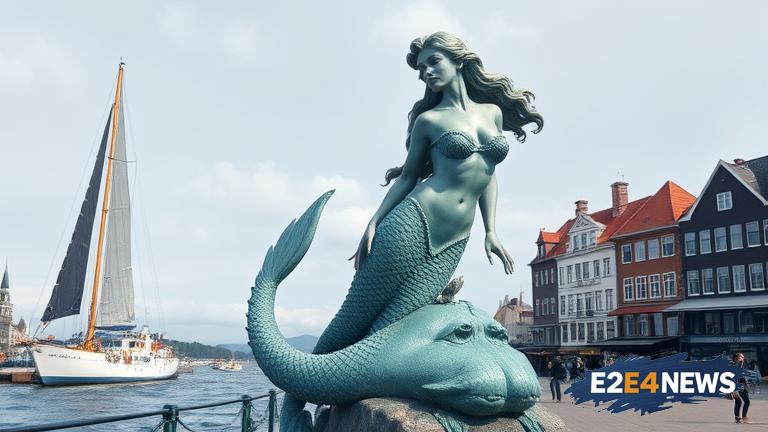A mermaid statue located in Denmark has been at the center of controversy after it was deemed pornographic and subsequently removed. The statue, which was situated in a public area, had been a topic of discussion among locals and tourists for some time. While some people found the statue to be a unique and interesting piece of art, others were offended by its explicit nature. The decision to remove the statue was made by local authorities, who deemed it to be inappropriate for public display. The removal of the statue has sparked a debate about the role of art in public spaces and what constitutes acceptable content. Some people have argued that the statue was a form of artistic expression and should have been allowed to remain, while others have praised the decision to remove it, citing concerns about its impact on children and families. The statue’s removal has also raised questions about censorship and the limits of free speech. Denmark has a reputation for being a liberal and tolerant country, and the removal of the statue has been seen by some as a contradiction to these values. However, others have argued that the removal of the statue was necessary to protect the public from explicit content. The controversy surrounding the statue has also highlighted the importance of considering the context and audience when displaying art in public spaces. In this case, the statue was located in an area where children and families were likely to see it, which may have contributed to the decision to remove it. The removal of the statue has also sparked a discussion about the role of local authorities in regulating public art. While some people have argued that local authorities should have the power to decide what art is acceptable for public display, others have argued that this could lead to censorship and the suppression of artistic expression. The controversy surrounding the statue has also had an impact on the local community, with some business owners expressing concerns about the potential impact on tourism. However, others have argued that the removal of the statue will have a positive impact on the community, as it will help to create a more family-friendly environment. The removal of the statue has also raised questions about the future of public art in Denmark. Will local authorities become more conservative in their approach to public art, or will they continue to support the display of controversial and thought-provoking pieces? Only time will tell. In the meantime, the controversy surrounding the mermaid statue will continue to be a topic of debate and discussion. The statue’s removal has also highlighted the importance of considering the cultural and social context of a piece of art. In Denmark, there is a strong tradition of liberal values and freedom of expression, and the removal of the statue has been seen by some as a challenge to these values. However, others have argued that the removal of the statue was necessary to protect the public from explicit content and to create a more family-friendly environment. The controversy surrounding the statue has also sparked a discussion about the role of social media in shaping public opinion. The statue’s removal was widely reported on social media, with many people taking to Twitter and Facebook to express their opinions on the matter. The use of social media has helped to amplify the controversy surrounding the statue, and has allowed people from all over the world to join in the discussion. The removal of the statue has also raised questions about the impact of social media on our perceptions of art and culture. Do social media platforms have a role to play in shaping our understanding of what is acceptable in terms of public art, or do they simply reflect existing attitudes and opinions? The controversy surrounding the mermaid statue is a complex and multifaceted issue, and there are no easy answers. However, one thing is clear: the removal of the statue has sparked a important debate about the role of art in public spaces, and the limits of free speech and expression.





